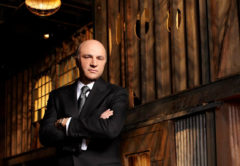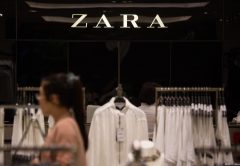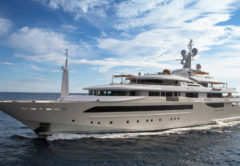(BEIRUT, LEBANON) — Lebanon’s Central Bank is considering pumping more money into the economy after commercial banks used up most of the $800 million provided in credit facilities in 2014, its Governor Riad Salameh said Wednesday.
The Central Bank announced a $1.46 billion stimulus package in 2013 and followed it in 2014 by another $800 million in credit facilities to commercial banks at 1 percent interest rate. The stimulus mainly targeted the real estate sector with more than 50 percent of funds reserved for housing loans.
“The funds have been almost used completely and we are looking at increasing that package,” Salameh said at a joint conference with the International Monetary Fund. “This package provided 50 percent of the growth that we saw in 2013. We did the same for 2014 and we are pleased to see that the credit enhancement we did was successful this year.”
The Central Bank also played a role in creating employment by providing incentives to commercial banks to make equity investments in startups or venture capital funds, Salameh said.
Under circular 331 issued last year, the Central Bank guarantees up to 75 percent of the value of banks’ investments in startups or VC funds. A commercial bank that agrees to invest in startups receives seven-year interest-free credit from the Central Bank that can be invested in Treasury bonds.
The total contribution of the program to the economy could reach $400 million, provided that commercial banks invest 3 percent of their total capital, which is a limit set by the Central Bank.
The Central Bank will continue with the same strategy that helped create employment, according to Salameh, but will pay close attention not to trigger volatility in interest rates and maintain the stability of the Lebanese currency, he added.
“This trend is going to continue but we are doing it in a way that will not put at risk the stability of the Lebanese pound and will not expose the banks to unusual risks,” he said.
Lebanon’s economy has been hit hard as a result of the spillover of the Syrian conflict, according to the “Regional Economic Outlook: Middle East and Central Asia” report unveiled by Mohammad Elhage, director of the IMF-Middle East Regional Technical Assistance Center.
Real GDP growth has declined from an average 8 percent during 2009-10 to 2 percent in 2013, Salameh said.
Political paralysis and sporadic violence in Lebanon have deterred Gulf tourists and investors, hitting hard the real estate, tourism and service sectors.
“The travel bans pushed the Central Bank to take steps to stimulate local consumption,” Salameh said.
The influx of Syrian refugees to Lebanon, which has reached over 1 million, one-quarter of the country’s population, caused $2.6 billion in direct costs over the past two years and around $5 billion when taking into account lost opportunities, Salameh said.
However, the governor said several recent surveys are pointing to an improved economic sentiment, though the official growth forecasts for 2014 will not be released by the Central Bank before August.
Source: The Daily Star







